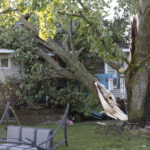New York has issued guidance to commercial insurers that they are prohibited from inquiring about or making coverage decisions based on a property’s status as an affordable housing development or a tenant’s source of income.
The guidance is in a circular letter from the New York State Department of Financial Services (DFS) that implements a new law signed in April by Governor Kathy Hochul. The new law is part of the state’s efforts to build more affordable housing and prevent unfair discrimination in real estate sales and rentals.
“With this new guidance, we are putting insurers on notice: New York will not tolerate bias against our affordable housing providers,” Hochul said. “Insurance discrimination drives up costs for property owners and renters and puts countless affordable homes at risk. My administration is stepping up our enforcement of housing discrimination of all kinds to ensure fairness in our housing market and to keep costs down for all New Yorkers.”
According to the DFS letter, insurers are prohibited from inquiring about or considering, canceling, refusing to issue or renew, increasing the premium of, or excluding, limiting, restricting or reducing coverage based on:
- The presence of dwelling units in the building that are affordable to residents at a specific income level pursuant to a government agreement;
- The receipt of governmental rental assistance by the owner or tenants of a residential rental building, or the shareholders of a cooperative housing corporation;
- The level or source of income of the building’s residents; or
- Whether the building is owned by a limited equity cooperative, a public housing authority, or a cooperative housing corporation subject to certain provisions of the private housing finance law.
The circular letter states that If an insurer’s rates are based on the real property being an affordable housing development or containing affordable housing units, then the insurer must file revised rates with DFS. Insurers also must update their insurance applications and underwriting guidelines accordingly.
2022 Report
In November 2022, DFS and the state housing agency, Homes and Community Renewal (HCR), published a report concerning property/casualty insurance for buildings with affordable or subsidized housing units. Developers of affordable housing indicated they had experienced significant premium increases or difficulty obtaining policies for affordable housing developments. They also indicated that insurance companies and producers often ask whether buildings contain affordable, subsidized, or Section 8 units, and what proportion of the buildings is comprised of such units.
At that time the insurance law did not prohibit such questions. “However, these insurer inquiries about affordable housing raise legitimate concerns from stakeholders about the potential for unfairly discriminatory results,” the report found.
The report noted that while insurers may classify, select, and price risks using “appropriate underwriting standards,” New York, like many other states, has determined that it is unfair discrimination for insurers to consider certain underwriting and/or rating factors even if they are predictive of loss. New York law prohibits the use of race, color, creed, national origin, disability, and status as a victim of domestic violence.
Nothing in the state’s law prevents insurers from asking questions about development characteristics, such as location, occupancy, maintenance, safety, and security of any housing, including affordable housing, “if those questions are reasonably related to future losses,” the report added.
Following the 2022 report, DFS gathered additional information from insurers. DFS said it found that some insurers request information about government-subsidized housing units or tenants paying rent with housing assistance. Insurers indicated that they use this information primarily for underwriting purposes, either to determine eligibility or to determine if further underwriting is necessary.
Thereafter, DFS worked with the governor and legislature to pass what is now a law (Section 3462 of Chapter 56) to prohibit basing insurance questions about whether the property is an affordable or subsidized housing development. The circular letter implements that new law.
Insurance Data
The 2022 report cited an overall lack of data around insurance for affordable housing properties. It looked at a HCR portfolio sample of 182 properties comprising nearly 24,000 housing units, the vast majority of which were affordable. The total cost of insurance premiums for this subset of the HCR portfolio was $17.6 million in 2021. The median premium per unit was $659 and the average was $755. The highest per-unit premiums exceeded $1,000 and were concentrated geographically in New York City and its surrounding suburbs.
HCR has information on insurance premium costs for each year in the 2019 through 2021 time period for 152 properties comprising more than 20,000 housing units. Of those 152 properties, all but one experienced increases in their insurance premiums over that time period. The median increase was 28% and the average increase was 43%. HCR has insurance premium cost information for at least two years during the 2019 through 2021 time period for an additional 24 properties comprising more than 2,600 units. For those properties, 22 experienced a year-over-year increase during the period. The median increase was 20% and the average was 28%.
Insurance companies are not required to insure either affordable or market-rate housing developments in the state. The report acknowledged that insurance losses for affordable and market-rate housing developments in New York are increasing for a variety of reasons including higher costs for labor and materials, increased property values, extreme weather, escalating litigation costs and the state’s strict liability standard in construction accidents. According to the report, many insurers have had to increase their prices. Some insurers have minimized their exposure by increasing deductibles, reducing limits of liability, or adding or exclusions. Still others have exited the market entirely, the report noted.
When insurers that are licensed by DFS do not provide coverage, landlords often turn to unlicensed insurers in the excess line market for insurance, where policies are often more costly and the state has less authority to protect buyers, according to the report.
Was this article valuable?
Here are more articles you may enjoy.


 ‘Door Knocker’ Roofers Were Everywhere. NC Farm Bureau Saw an Opportunity
‘Door Knocker’ Roofers Were Everywhere. NC Farm Bureau Saw an Opportunity  Florida Jury Returns $779M Verdict for Family of Security Guard Killed at Gambling Cafe
Florida Jury Returns $779M Verdict for Family of Security Guard Killed at Gambling Cafe  One of Highest Property Claims Severity Recorded in Q3 on Low Volume, Says Verisk
One of Highest Property Claims Severity Recorded in Q3 on Low Volume, Says Verisk  Poorer Americans Dropped Federal Flood Insurance When Rates Rose
Poorer Americans Dropped Federal Flood Insurance When Rates Rose 

